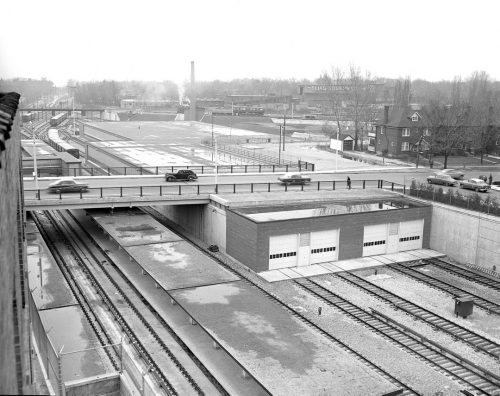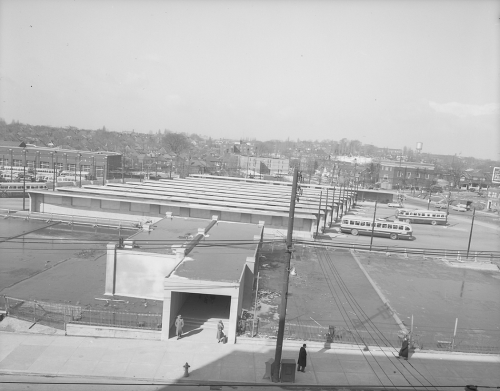
In addition to subway track and station construction, work progressed on other important components of the system. At Davisville, a complete servicing facility for subway trains was built. To the west of the station, a huge yard was reserved for subway cars, and scores of skilled craftsmen were employed on maintenance work at the Davisville Shop Building. Davisville also housed the control panel for the automatic block signal system that used red, green, and yellow lights to direct subway drivers.

Meanwhile, at the terminal station of Eglinton, the streetcar carhouse continued to operate after construction of the subway began, but with difficulty. Before the subway was completed, and while streetcars were still running on Yonge Street, this facility was crucial to the continuing smooth operation of service. The Eglinton Division personnel, who were largely streetcar operators and conductors, were understandably worried. What would happen to them once the streetcars were removed from Yonge Street?
The Commission responded by sending them back to school – the TTC School of Instruction – and by March of 1954, 200 operating employees were retrained to be subway motormen, guards, or carhouse operators. The Eglinton carhouse became a storage and washing building for buses and trolley coaches, which supplanted the streetcar at Eglinton. A large number of bus bay platforms were constructed to the west of the station’s entrance. From here, bus service radiated out to the north, west, and east.
